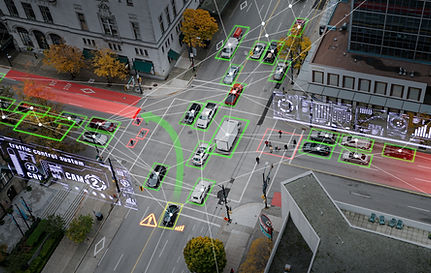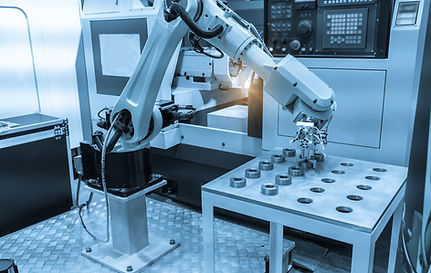Why AI-Native Systems Need Better Middleware
AI-native systems are transforming industries—from robotics to mobility—by relying on large foundation models, real-time sensor fusion, and adaptive decision-making. These systems demand low-latency, high-throughput communication and deterministic execution. Unfortunately, traditional middleware wasn’t designed for this level of complexity, scale, or responsiveness.
AI-Native Systems Are Evolving:
-
Foundation model–driven (multimodal, simulation-trained)
-
End-to-end learned pipelines (e.g. vision-to-action)
-
Closed-loop learning (reactive, RL-based behavior)
Challenges of Traditional Middleware:
-
ROS 2 and DDS are modular but not AI-native
-
Lack of support for real-time neural inference
-
Hard to scale for high-bandwidth, low-latency tasks
-
Static, non-adaptive control pipelines
Introducing Apex.OS for AI Systems
Apex.OS is designed from the ground up to meet the demands of AI-native systems. Whether you're building autonomous vehicles, smart robots, or edge AI infrastructure, Apex.OS delivers the performance, flexibility, and reliability needed to handle high-throughput data, real-time control, and scalable system integration—all while maintaining safety and determinism.
Purpose-built for AI-native workloads:
-
Real-time, zero-copy data transport
-
Safe and deterministic execution
-
Seamless deployment across hardware platforms
Core Middleware Capabilities:
-
Transport Management: Zero-copy, low-latency transfers
-
Prioritized Messaging: Critical path prioritization
-
Dynamic Execution: Adaptive control switching
-
Semantic Interfaces: Communicate at task/intent level
-
Synchronization: Across sensors, controllers, and time domains
End-to-End AI Integration Stack
Today’s AI-native systems don't just need to run efficiently—they must integrate cleanly with ML pipelines, hardware accelerators, and cloud environments. Apex.OS works seamlessly with Apex.Alan to support end-to-end machine learning development, deployment, and monitoring—all within a safety-focused runtime.
With Apex.OS + Apex.Alan:
-
Streamlined ML deployment pipelines
-
Cloud-native GPU resource and model lifecycle management
-
Accelerated inference with minimal time-to-first-token (TTFT)
Secure Multi-Tenant Support:
-
Isolated application execution in shared infrastructure
-
Identity-based resource access and context management

Designed for Real-Time AI Workloads
AI workloads demand more than raw compute—they need intelligent orchestration across sensors, compute units, and networks. Apex.OS is engineered for data-heavy, time-sensitive environments, offering deterministic execution and synchronized data processing across both cloud and edge components.
Built for:
-
Vision + LiDAR + Audio fusion
-
Real-time token-based decision making
-
Reactive + predictive behavior blending
Handles:
-
Asynchronous execution
-
Distributed nodes (cloud and edge)
-
Time-synchronized data ingestion and control
Example Use Cases
From mobility to healthcare, Apex.OS has been deployed in a variety of high-performance, safety-critical environments. These examples highlight how Apex.OS enables real-time processing and data communication across industries with strict latency and determinism requirements.

Autonomous Vehicles

Smart Infrastructure
Manage traffic control, surveillance, and event response using AI foundation models and edge-cloud integration.

Robotics

Healthcare Devices
Drive surgical robots and diagnostic systems with safe, responsive closed-loop control.
Key Product Features
Today’s AI-native systems don't just need to run efficiently—they must integrate cleanly with ML pipelines, hardware accelerators, and cloud environments. Apex.OS works seamlessly with Apex.Alan to support end-to-end machine learning development, deployment, and monitoring—all within a safety-focused runtime.
Deterministic, fixed-order replay (for validation and debugging)
UDS diagnostics support (via DoIP)
Centralized + distributed data recording and playback
Integrates with leading simulation environments (e.g., Carla)
Supports MCAP, ROSBag, TECMP formats
Time domain synchronization across ECUs
Safety, Standards & Compatibility
Safety is not optional—it’s foundational. Apex.OS is designed with strict compliance in mind, offering alignment with leading automotive standards and seamless compatibility with existing tools and ecosystems.
Standards Support:
-
ISO 26262 (ASIL D)
-
ISO 21448 (SOTIF)
Compatibility:
-
AUTOSAR, DDS, SOME/IP, CAN, FlexRay
-
ROS 2 ecosystem tools (RViz, rosbag2, tf2, etc.)
